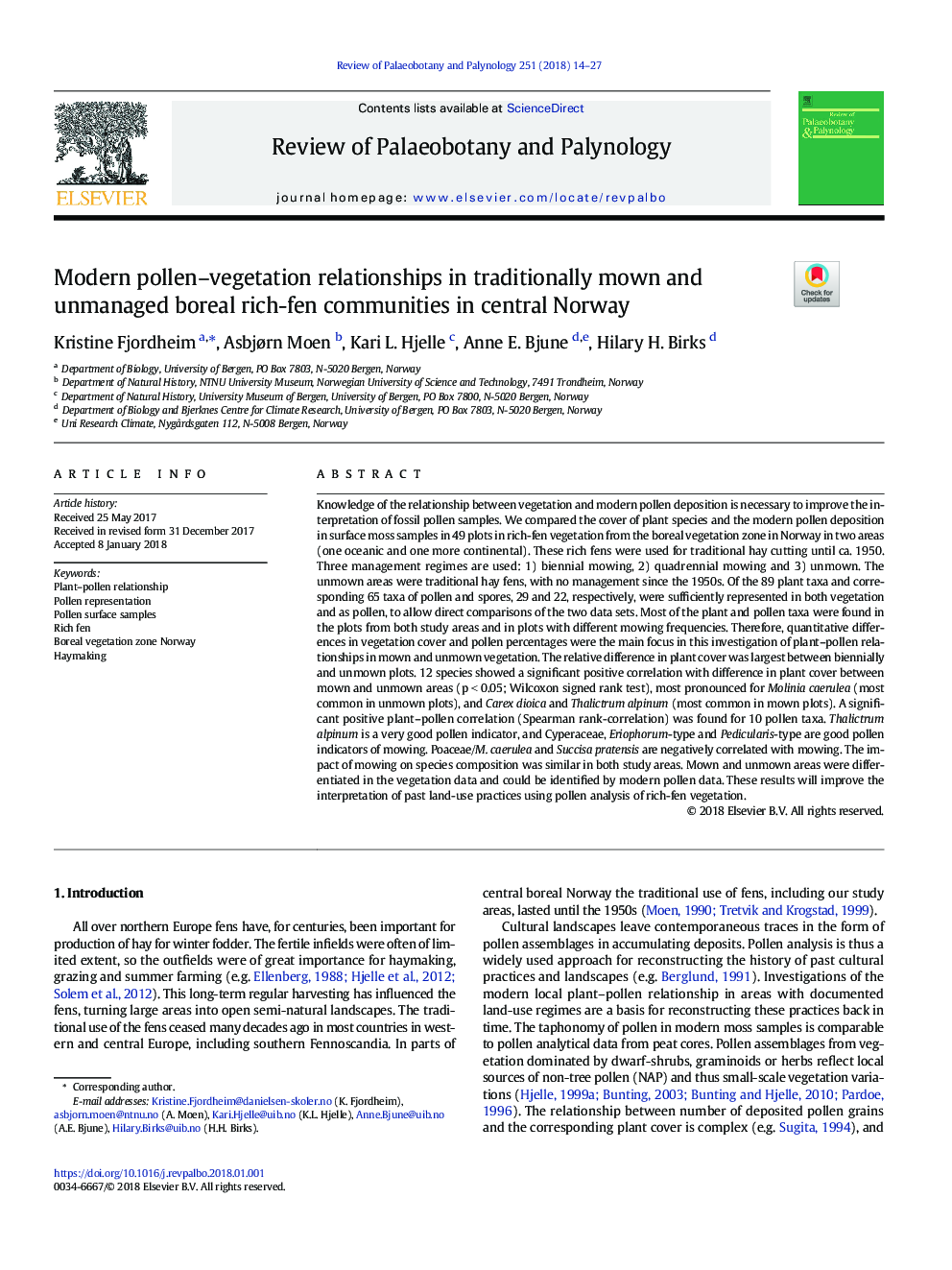| کد مقاله | کد نشریه | سال انتشار | مقاله انگلیسی | نسخه تمام متن |
|---|---|---|---|---|
| 8916636 | 1642446 | 2018 | 14 صفحه PDF | دانلود رایگان |
عنوان انگلیسی مقاله ISI
Modern pollen-vegetation relationships in traditionally mown and unmanaged boreal rich-fen communities in central Norway
ترجمه فارسی عنوان
روابط گرده گل و گیاهان مدرن در جوامع غواصی غواصی که به طور مرتب و غیرمعمول در مرکز نروژ زندگی می کنند را در بر می گیرد
دانلود مقاله + سفارش ترجمه
دانلود مقاله ISI انگلیسی
رایگان برای ایرانیان
موضوعات مرتبط
مهندسی و علوم پایه
علوم زمین و سیارات
فسیل شناسی
چکیده انگلیسی
Knowledge of the relationship between vegetation and modern pollen deposition is necessary to improve the interpretation of fossil pollen samples. We compared the cover of plant species and the modern pollen deposition in surface moss samples in 49 plots in rich-fen vegetation from the boreal vegetation zone in Norway in two areas (one oceanic and one more continental). These rich fens were used for traditional hay cutting until ca. 1950. Three management regimes are used: 1) biennial mowing, 2) quadrennial mowing and 3) unmown. The unmown areas were traditional hay fens, with no management since the 1950s. Of the 89 plant taxa and corresponding 65 taxa of pollen and spores, 29 and 22, respectively, were sufficiently represented in both vegetation and as pollen, to allow direct comparisons of the two data sets. Most of the plant and pollen taxa were found in the plots from both study areas and in plots with different mowing frequencies. Therefore, quantitative differences in vegetation cover and pollen percentages were the main focus in this investigation of plant-pollen relationships in mown and unmown vegetation. The relative difference in plant cover was largest between biennially and unmown plots. 12 species showed a significant positive correlation with difference in plant cover between mown and unmown areas (p < 0.05; Wilcoxon signed rank test), most pronounced for Molinia caerulea (most common in unmown plots), and Carex dioica and Thalictrum alpinum (most common in mown plots). A significant positive plant-pollen correlation (Spearman rank-correlation) was found for 10 pollen taxa. Thalictrum alpinum is a very good pollen indicator, and Cyperaceae, Eriophorum-type and Pedicularis-type are good pollen indicators of mowing. Poaceae/M. caerulea and Succisa pratensis are negatively correlated with mowing. The impact of mowing on species composition was similar in both study areas. Mown and unmown areas were differentiated in the vegetation data and could be identified by modern pollen data. These results will improve the interpretation of past land-use practices using pollen analysis of rich-fen vegetation.
ناشر
Database: Elsevier - ScienceDirect (ساینس دایرکت)
Journal: Review of Palaeobotany and Palynology - Volume 251, April 2018, Pages 14-27
Journal: Review of Palaeobotany and Palynology - Volume 251, April 2018, Pages 14-27
نویسندگان
Kristine Fjordheim, Asbjørn Moen, Kari L. Hjelle, Anne E. Bjune, Hilary H. Birks,
